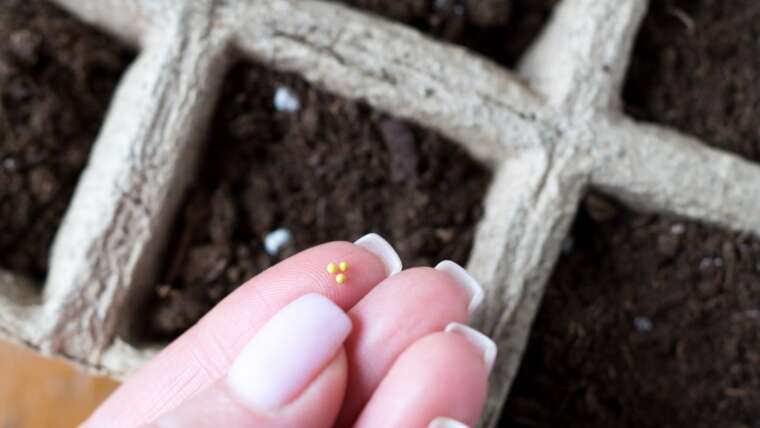February is a month of preparation in the garden for the spring season ahead. In some cases, that involves dusting off your shears and completing a late winter pruning session to boost growth in the coming months.
The ideal time to prune differs from plant to plant. Not every shrub benefits from pruning in late winter – many are pruned in fall instead. But if you have any of these nine shrubs in your garden, February is the perfect time to trim.
Roses
In warmer climates, prune roses in February for better spring growth.
For those in warmer climates (USDA Zone 8 and above), February is an ideal time to cut back your roses. This is the annual hard pruning session for shrub roses, where canes are cut back significantly. This is followed by a light pruning later in the year to promote better flowering.
Late winter provides the opportunity to prune to reinvigorate your roses just before spring growth kicks off but without the danger of cold damage. This boosts growth across spring and summer, maximizing the number of flowers you get to enjoy. Pruning also gives you a chance to remove any damaged or diseased stems to give the plant a fresh start without struggle.
Using a pair of sharp and clean pruning shears, cut the canes down to 1-2 feet above the ground. Trim the weaker stems back further, leaving a little more length in the thickest and strongest ones. Remove any signs of winter damage, crossing stems or stems growing toward the center rather than outwards to improve airflow once the leaves start to fill out.
Butterfly Bush
 Prune Buddleja in February after spotting new growth for better flowering.
Prune Buddleja in February after spotting new growth for better flowering.
Buddleja doesn’t require late winter pruning if you’re happy to let the plant grow naturally. However, these vigorous growers can become leggy and top-heavy over time, leaving you with only a few flowers at the very top of the shrub. To keep growth dense and improve flowering, pruning in February is recommended.
It’s important to wait until you spot new growth on your butterfly bush before you cut back. As this shrub blooms on new wood, cutting back too early can negatively impact flowering in summer. Look out for green, leafy growth as your sign to start trimming.
Start by removing any dead or damaged stems and cutting the remaining ones down to about a foot high, right above the new leaf growth. Remove any crossing stems and shape the plant, ready for new growth to emerge. While you shouldn’t cut back too much, these vigorous growers usually bounce back well, even if you do make a mistake.
Beautyberry
 Prune Callicarpa shrubs in late winter for abundant fall berries.
Prune Callicarpa shrubs in late winter for abundant fall berries.
Beautyberry shrubs (Callicarpa) are known for their bright purple berries, adding a unique pop of color to fall gardens. But to ensure your plant is packed with berries this fall, pruning in late winter is best. This keeps the entire plant tidy and productive, as they tend to become unruly when left alone.
The level of pruning you do will depend on the size you want your bush to be. A heavy trim – down to a few inches above the ground – will keep the bush compact throughout the season. If you want them to grow a little taller, leave some more length on the bush by cutting back about one-third.
Since these shrubs are large, you’ll see much quicker results using tough loppers. Don’t be afraid to trim heavily – you’ll still see flowers and berries this season, even with a major cutback. Cut all the branches to around 8 – 10 inches tall to completely reinvigorate the plant, or cut back a third of the branches if you prefer to keep the existing growth.
Boxwood
 Regularly trim Buxus hedges for structural appeal.
Regularly trim Buxus hedges for structural appeal.
Anyone with a neat Buxus hedge will know pruning is a regular task. Trimming is often required to maintain the structural look these plants are known for. Whether your boxwood is lining a path or you’re trying topiary, it’s good to always have pruning shears on hand.
But if you want to reduce the size of the shrub or reinvigorate tired growth, cutting back more significantly in February (at least, more than the quick cuts you’ll make when shaping) is the perfect time for gardeners in warmer zones. This will create space for new and healthy growth in spring, creating the dense and lush look we’re after.
Boxwoods don’t respond well to heavy pruning, so never remove more than one-third of the plant at a time. I like to stick to one quarter at a time, just to be safe. If you do need to cut back more, do so in stages throughout spring to prevent shock, giving the branches time to recover before cutting again.
Crepe Myrtle
 Restrained pruning maintains crepe myrtle’s shape and avoids stunted growth.
Restrained pruning maintains crepe myrtle’s shape and avoids stunted growth.
Crepe myrtle is another shrub that benefits from restrained pruning rather than a major chop. Technically, they don’t usually need to be pruned at all if you’re happy with the shape and there are no issues with damage or disease. But if you do want to prune, it’s vital to cut carefully to avoid stunted growth and weak stems.
The goal of pruning crepe myrtle is to improve airflow between branches and maintain a neat, upright shape. Don’t cut the tops of all the branches as you would with some other shrubs – this will leave you with thick stumps and a blocky shape. Thin a few branches on the outer edges and remove any damaged growth, keeping about five trunks to improve shape.
While pruning shears are suitable for minor trims, you may need strong loppers or a pruning saw to completely remove any of the thicker branches.
Certain Hydrangeas
 Prune certain hydrangeas in February for healthier spring growth.
Prune certain hydrangeas in February for healthier spring growth.
Some hydrangeas are perfect for pruning in February before spring growth begins. However, not all species fit in this category. Smooth (Hydrangea arborescens) and panicle (Hydrangea paniculata) hydrangeas should be pruned in late winter or early spring. Bigleaf hydrangeas (Hydrangea macrophylla) need to be pruned as soon as they finish flowering.
For panicle hydrangeas, cut the branches back to just above a bud to encourage new, healthy growth right before spring. Also, remove any dead or damaged sections and clean up the shape to keep the bush tidy the following season.
Once established, smooth hydrangeas can handle a harder trim, almost down to soil level if you want to manage size. If not, simply remove areas of dense growth and competing branches to improve airflow. Also, cut off any damaged or diseased areas to direct energy toward new and healthy growth.
Abelia
 Prune the shrub in February for size control and garden neatness.
Prune the shrub in February for size control and garden neatness.
Abelias don’t need annual pruning to thrive, especially if they’re growing happily as they are. But if you like to keep your garden neat or want to control size, February is a great time to cut back these flowering shrubs in several regions.
You need to prune before any new growth emerges, as trimming too late will impact flowering later in the year. The level of pruning you do will depend on the performance of the plant. You can cut them down to the ground to completely reinvigorate growth or simply remove damaged branches and cut back weaker stems to improve shape.
Abelia branches can become quite tough as they age. If you are doing heavy pruning, a pruning saw may be required to get through the thicker sections. For the rest, loppers should do the trick.
Rose of Sharon
 Prune Hibiscus in late winter for better blooming potential.
Prune Hibiscus in late winter for better blooming potential.
Hibiscus syriacus is grown for its massive, colorful blooms in summer. Pruning in late winter isn’t absolutely necessary but can be helpful on larger or underperforming bushes to boost blooming potential.
Rose of Sharon has the potential to grow taller than 10 feet, with the exact size dependent on the variety you choose. If you want to manage its size and keep the shrub compact, cut back the branches annually. If you’re just pruning to improve health, remove damaged areas and sections of leggy growth, leaving the rest of the branches to continue growing.
The level of pruning will impact both the number of flowers you see that season and their size. Light pruning will boost flower production, while heavy pruning will reduce the amount of flowers. However, the fewer flowers will be larger in size compared to those on a lightly pruned bush.
Wisteria
 Prune wisterias to control growth and encourage flowering.
Prune wisterias to control growth and encourage flowering.
Wisterias are known for vigorous growth, so much so that some species are invasive in a few regions of the US. Pruning can control the rapid growth of these shrubs (even if you are growing a non-invasive native species) or reinvigorate growth on older wisterias that aren’t flowering as well as they used to.
A light prune is usually all that is required for younger plants in February. This will help you create the desired shape you’re after or assist in training the vines along a structure. Older wisterias with sparse growth will benefit from heavy pruning, potentially cutting some branches back to the first healthy bud.
Another round of pruning is required in summer to thin dense growth and encourage another round of flowers. Trim side shoots and unwanted growth at the base to keep the overall look neat and tidy.
Final Thoughts
February is the perfect time to pull out your shears and saws to prune these nine shrubs. Make sure you have a clear plan before you make any cuts – you can’t put branches back once you remove them.




